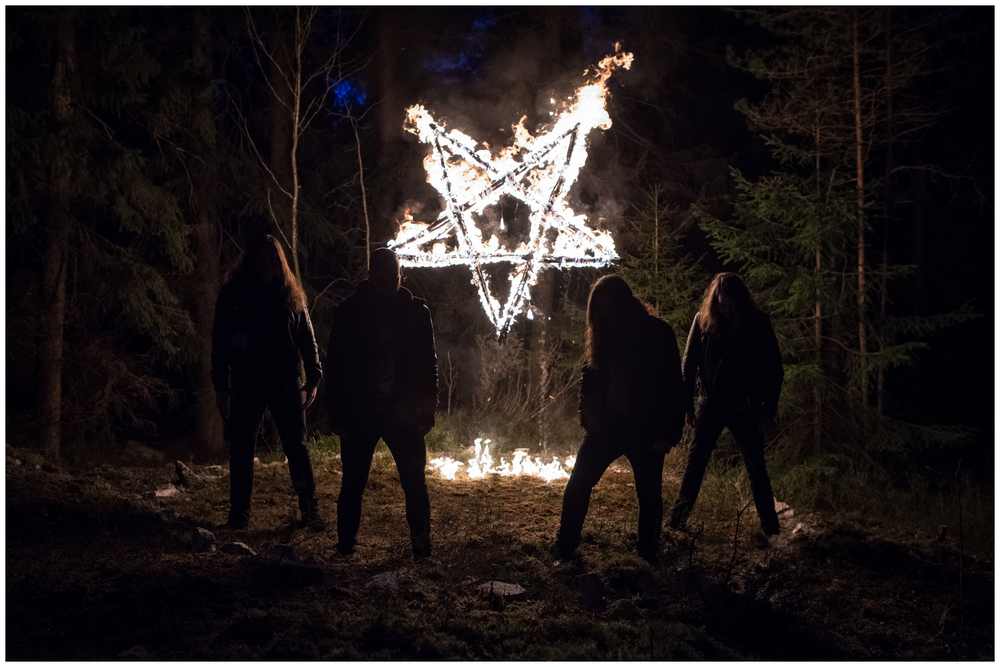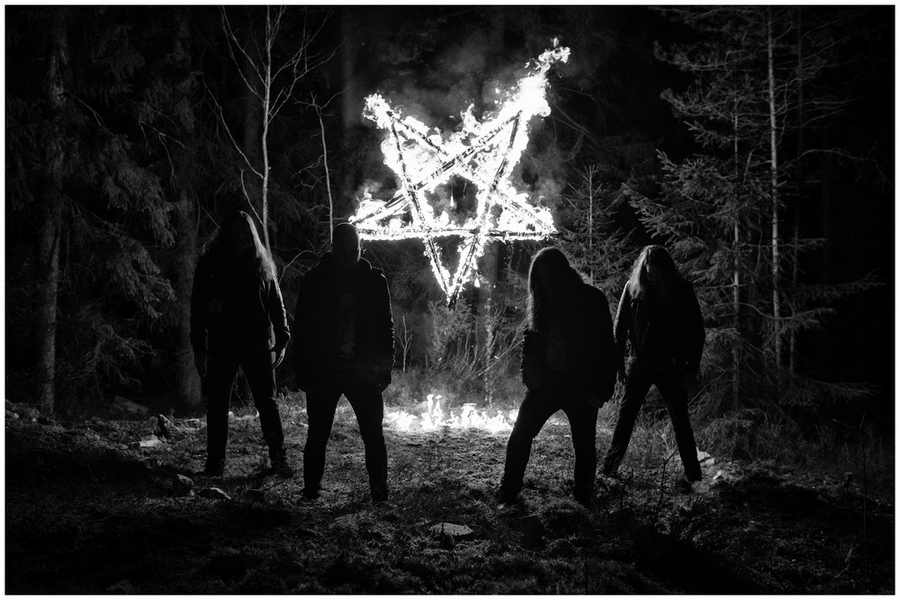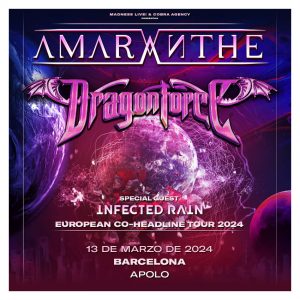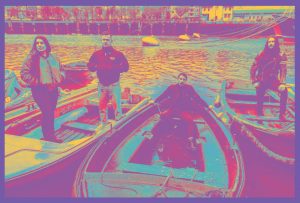EXECRATION (Eng.)
– Hi, thanks for your time. What are you currently up to? How is everything doing right now with EXECRATION?
Pretty great, I must say. We’re in “performance mode”, playing gigs, and rehearsing sets for more gigs, after a long time working on the album. It’s good to be out in the world again.
– Your newest opus was released just a month ago, did its feedback fulfill your expectations?
I would say so. The reviews so far have been nothing short of raving, and we’re getting noticed in more places than we used to – including mainstream media here in Norway. I’ve also enjoyed reading some of the reviews as it feels like many people “got” what we tried to do with the album.
– If you could change anything on the album; what would it be?
Oh, that’s too soon I think. I’m still very happy with it, and I would need some more distance to point out anything in particular.
– I think «Odes of the Occult» was a step forward into the band’s evolution compared to the debut album, «Syndicate of Lethargy», and now  this new «Morbid Dimensions» is, once more, an even bigger step forward, bringing new elements and influences to your sound. Is something you focus on to top over your previous record with each new release?
this new «Morbid Dimensions» is, once more, an even bigger step forward, bringing new elements and influences to your sound. Is something you focus on to top over your previous record with each new release?
Most definitely. With both Odes and Morbid we started out with a clear mission that this should be an album that delivers something more/different than the previous one. We try not to repeat ourselves too much while still building a characteristic sound. In terms of influences, we’ve been much more unrestricted this time around, and worried even less about genre definitions than we did with Odes. Hopefully we will be able to keep evolving, but I also think the changes will be less revolutionary in the future, especially compared to the jump from Syndicate to Odes.
– As I said, you have also brought new elements to your sound. Have you broaden your influences and/or horizons?
The influences have been there all the time, but I think we’ve let more of them into our rehearsal space. As I said, we’ve been less focused on genre definitions this time around, trying to focus on writing good music that we ourselves enjoy. That together with making changes to the sound, and keeping in mind we didn’t want to recreate Odes of the Occult has helped us achieve something that has a personality of its own.
– You have also built really suffocating and dark atmospheres, are among the best I’ve heard lately into the genre. Is there anything you want to convey or channel through them? What role does the whole ambience play on «Morbid Dimensions»?
Ambience has always played a big role for us. I guess we have gotten better at communicating it, but if you go back to our first EP and listen to the title track (“Language of the Dead”), you will find that we’ve been working on the atmosphere very much all along. We want our music to convey darkness and a certain mystery, and the atmospheric element of the music helps do this in a much more effective way than simply blasting our way through could ever do.
– Even though your Death Metal is rooted in the 80’s and 90’s you aren’t like the usual old school DM band, being progressive, not technical, but the nature of your music feels progressive. Due to this I would like to know how do you tend to work on the songwriting and how did you approach, what things do you focus on.
The main focus in our songwriting is the feeling. We start out with an idea of the kind of feeling we want to conjure, and judge any ideas and improvisations against that. This is one of the big steps forward for us this time, as we’ve been able to take riffs that are very basic in many ways and make them into something interesting. We always write together, and what starts out as a simple riff goes through trial and fire to end up as something to put onto the record.
– Due to this I guess your musical influences may be diverse. Which are the main ones?
Ah, so many. We’re all fans of some good classic death metal: Gorguts, Autopsy, Ripping Corpse, old Immolation, Darkthrone’s Soulside Journey and other non-death classics, such as Voivod, Sepultura, Slayer and others. Then there’s many black metal bands that have influenced us, as well as all the other less extreme stuff. You’ll also find a good share of seventies prog and psychedelia among our record collections. I (Chris) am currently on a huge Rush trip.
– What kind of link does it exist between the cover artwork and the musical content on «Morbid Dimensions»?
The cover has been a source of inspiration throughout the whole process. That is to say, the idea behind the cover. It is loosely based on a movie poster for a Norwegian horror movie from the fifties. We chose this imagery as a concept to work with, and at some point throughout the writing process, we gave Kristian Valbo (of Obliteration) the same material and brief, and he created the cover. It was a perfect match with the music.
– All this about «Morbid Dimensions» being said; how could you describe it in just 3 words?
You find out.
 – There have been lately coming out really interesting Death Metal bands from Norway, such as OBLITERATION or MABUSE to name just a few. What other Norwegian bands into the style could you suggest?
– There have been lately coming out really interesting Death Metal bands from Norway, such as OBLITERATION or MABUSE to name just a few. What other Norwegian bands into the style could you suggest?
If you haven’t already you must check out Diskord, which is a fantastic band from Norway. They’re more spastic, and a three-piece. Great live band as well. There’s also two bands from the west of Norway, Reptilian and Inculter, playing death and thrash – really awesome stuff.
– And finally, what are your near future plans?
We’re playing Inferno Festival in Norway next year, and are currently planning more gigs to support the album. We will write some material in 2015, but it is not yet decided how we’re going to release it, time will tell. For now, we are focused on supporting Morbid Dimensions through gigging.







